Pre-Columbian Art Midterm
1/103
There's no tags or description
Looks like no tags are added yet.
Name | Mastery | Learn | Test | Matching | Spaced |
|---|
No study sessions yet.
104 Terms
Kunz Axe
Middle Formative. Jade celt depicting howling baby face

Colossal Head 5, San Lorenzo, Veracruz
Early Formative. Jaguar paws at head (perhaps costume element), might depict a ruler or religious figure, jaguar could symbolize clan/family. Distinct facial features suggest depiction of specific individual

La Venta, Veracruz
Middle Formative. Large man made hill in center. Many important objects from Complex A, located in the north.
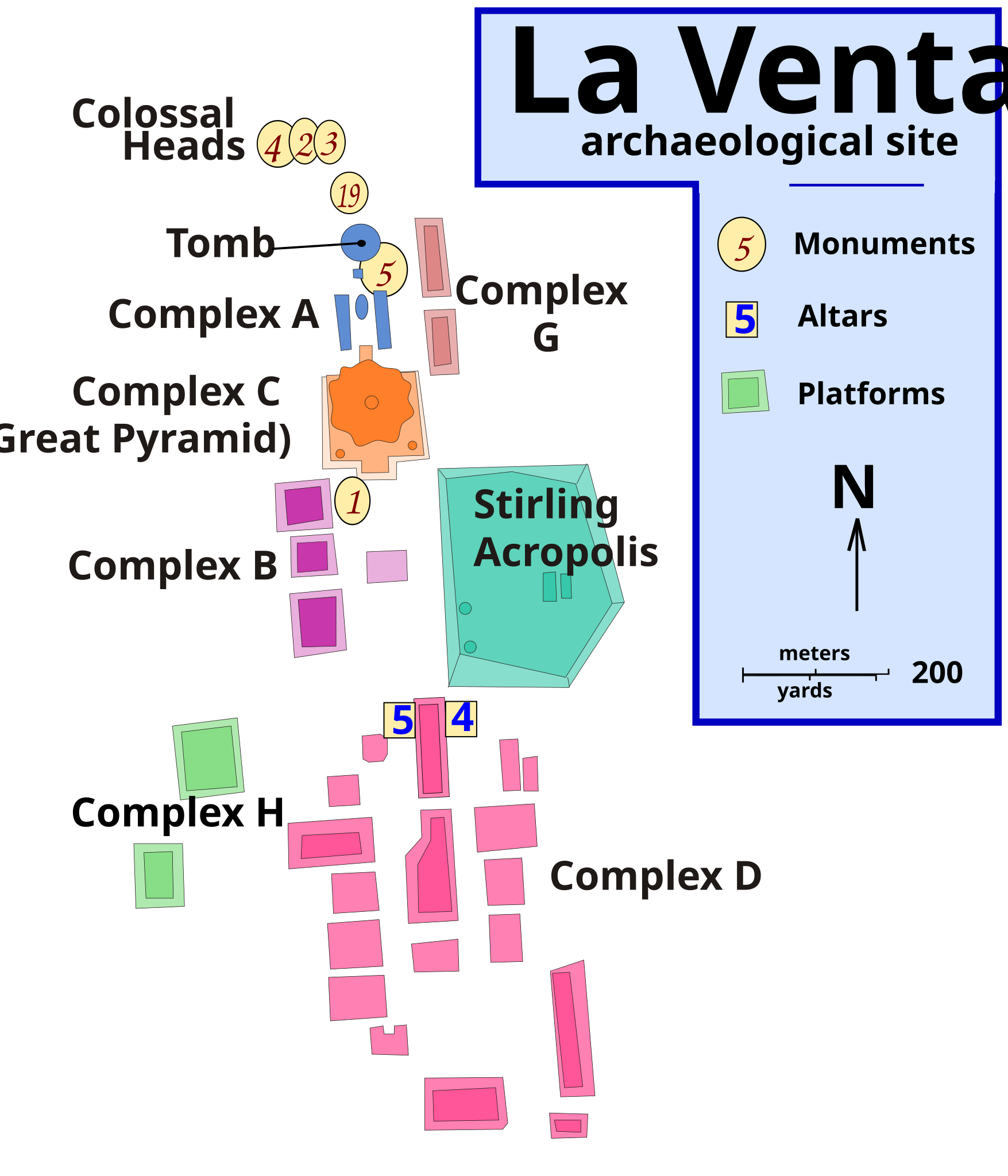
Olmec lord, Altar 4, La Venta, Veracruz
Middle Formative. Not an altar Detailed figure atop platform covered with design that could be jaguar pelt w/ jaguar head. Figure may wear a harpy eagle headdress (Reilly). Figure holds rope, is naked (captive?)

Stela 3, La Venta, Veracruz
Middle Formative. Heads everywhere (on belt buckles, on pectoral ornaments) with ear and nose spools. Bottom right figure with enormous headdress. Figures at top could be sky realm. Behind bottom right figure may be an opening (cave or underworld).
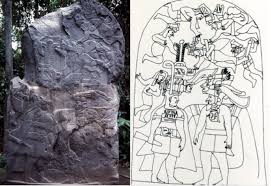
Las Limas figure, Las Limas, Veracruz
Middle Formative. Olmec greenstone. Child holds baby in lap. Baby has face of Olmec rain deity. Knees, shoulders, face of child are incised with faces of other supernaturals, perhaps mapping out the cardinal directions.

“Baby” figure, Las Bocas, Puebla
Middle Formative. Not necessarily a baby, but has baby proportions
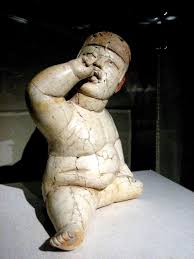
Petroglyph 1, Chalcatzingo, Morelos
Middle Formative. Looks like a landscape, spirals depict wind/air moving, quatrefoil with open side open depicts the mouth of a cave viewed from the side

Olmec lord, cave painting, Oxtotitlan, Guerrero
Middle Formative. 33ft over the cave entrance. Wearing green bird suit, but we can see face and limbs like an x-ray. Jade nose plug and feathers. Bird eye was likely inlaid with precious stone. Throne resembles Altar 4.
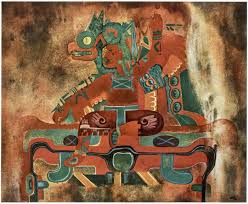
pyramid
Large stone structures often with flat tops (a temple or site on top) and stairs
colossal head
Olmec. Stone representations of heads sculpted from large basalt boulders 1-3m high
relief sculpture
sculpture that projects in varying degrees from a two-dimensional background. gives the impression that the image or figure is rising out of the stone
sky band
The edge of the calendar wheel. Or maybe it is the carved stone on the edge of any piece, with glyphs representing the sky and celestial events
quincunx
Five points arranged in a cross (like the five side on a die). Meaning space time. Dots represent cardinal directions, center dot represents axis mundi.
stela
monuments made of tall stone shafts
petroglyph
an image created by removing part of a rock surface by incising, picking, carving, or abrading, as a form of rock art
celt
an axe head
axis mundi
The axis of the earth between celestial poles (the sky realm above, the underworld below)

mosaic mask
could represent gods in costume and be used in ceremonies or events
were-jaguar
An Olmec motif and potential deity. Supernatural creature of human mixed with jaguar. Characterized by almond-shaped eyes and turned down mouth
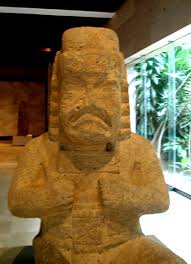
pectoral disk
An item of jewelry worn on the chest
Shaman
A figure who could be in conversation with deities
pars pro toto
part for whole, using well-understood artworks to understand symbols appearing in works that we can’t understand very well
multiple perspective
a concept that emphasizes the representation of subjects from various viewpoints within a single artwork
Danzantes, Temple of the Danzantes, Monte Albán
Middle Formative. Carved on stone slabs, they were thought to be figures dancing/appear to be figures dancing. They may be sacrificed captives of war “trapped” within the slabs. 300+ slabs were carved with these figures and 140 were incorporated into what we call Temple of the Danzantes. 140 in Mound J. Others reused as stones for building
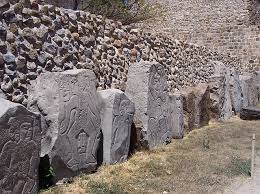
Mound J, Monte Albán
Late Formative. Center of monte albán’s plaza. Set off axis, perhaps for astronomical purposes, a giant chronographic marker to acknowledge the passage of time through an astrological event. Made of stone
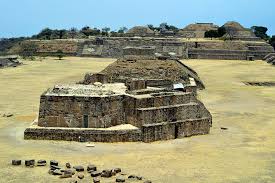
Terracotta dog with human mask, Colima style
Late Formative. Sometimes a container (liquid can exit through ears or mouth). Terracotta maybe with patina. Full stomach to symbolize fullness and hold more liquid. Found in tombs, perhaps ceremonial objects
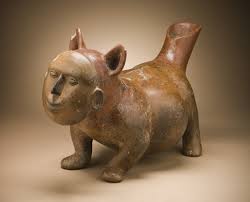
Structure 5, Cerros
Late Formative. Pyramid-esque, right by the sea. Along staircase are large masks of jaguar sun (to the right). Would have been a temple on top. The designs on either side are chronological figures referring to celestial activity

Hero Twins? Stela 1, Nakbe
Late Formative. Carved into stone slab. Legendary Maya ancestors

Maize God and attendants, San Bartolo
Late Formative. Paintings at the top of a wall inside a pyramid. Located on North Wall. Olmec symbols like blood swirls, babies born out of a gourd, monster mouth with crossed bands, jaguar, quincunx. Maize God holds gourd (symbol of agriculture or fertility)

Stela 1, Izapa
Late Formative. Depicts Chaak, a Mayan deity associated with rain, water, and fishing (sometimes with creel on his back, which is a basket to store the fish he caught)
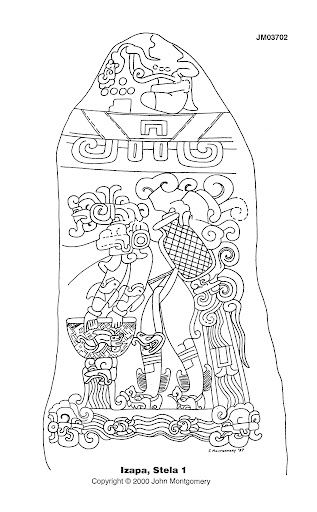
Standing warrior in the costume of the Principal Bird Deity, Stela 11, Kaminaljuyu
Late Formative. Detailed carvings of clothes and jewelry. Each choice stylistic, including mitten hands
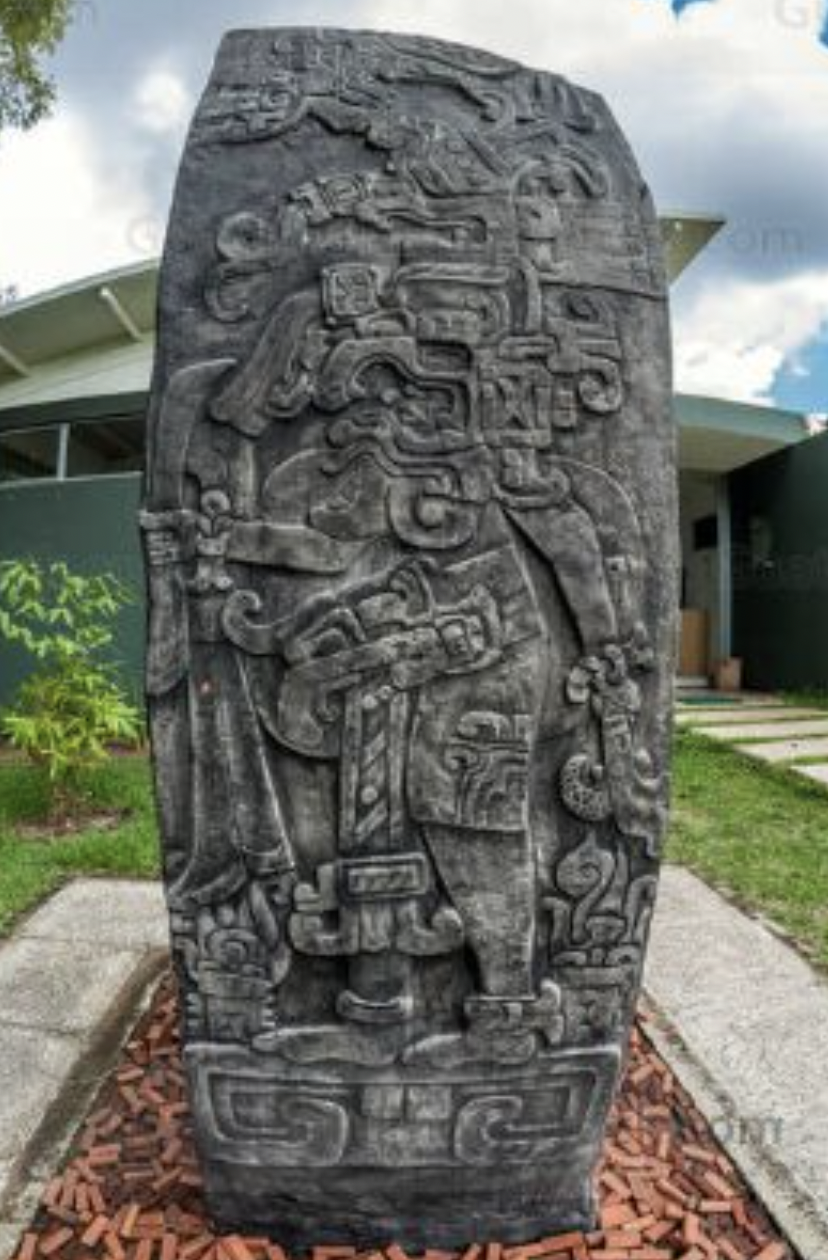
260-day and 365-day
260 day calendar may have come from length of gestation. Subdivided into 20 different day names and 13 different day numbers, cycle ends when each has combined (this takes 260 days). 365 day calendar corresponded with the solar year, 18 months with 20 days each and then 5 unnamed unlucky days at the end of the year. Both happened simultaneously
Long count calendar
Counts days since 3114 BCE. 5200 year cycle. “Tropical anniversaries” were found noted in records (Caesar solved this problem in his calendar with leap day).
Long count calendar date conversion
Find five number date in Stela. Take first three numbers. First is multiplied by 400. Second is multiplied by 20. Third is multiplied by 1. Add up answers and multiply by 360. Divide by 365. Subtract 3114. The answer is the date of the artwork.
Maya numbers (bar-and-dot numeration)
Bar means five, dot means one
emblem glyph
Each has 3 components. Translates as "holy lord of such and such place" and usually found next to a ruler’s name
chronographic marker
Some monuments or buildings were used to obseve the passage of time and marked celestial events
stirrup-spout vessel
A vessel with a stirrup looking thing on top. This serves as both the handle and the spout.
ballgame
The object of the game is to maneuver a rubber ball into a small stone hoop/circle not using one’s hands. Hips were used to hit and propel the ball. The ballgame likely had ritual and spiritual components
Yoke and palma
Ballgame equipment. Yoke was horseshoe shaped stone worn around hips. Palma was placed on abdomen, fitting into the opening of the yoke. Worn for protection.
Hacha
Ballgame equipment. Can be moved, like a post in football
belt assemblage
belt plaques with images of deities worn by rulers to reinforce their authority
Maize God
Hero twins have maize for alter egos. Maize is a vital and necessary force. Maize God was represented in many artworks and provides food for the people.
Chaak
A mayan deity associated with rain, water, and fishing, sometimes shown with a creel on his back (basket to hold fish)
shaft tomb
an underground burial site, typically located 3 to 20 meters underground which contains several, multigenerational burials of deceased kin groups
Principal Bird Deity
He represented the animate embodiment of jade, the most precious of all substances in the ancient Maya world.
Pyramid of the Moon, Teotihuacan
Late Formative. Along w Pyramid of the Sun and Pyramid of the Feathered Serpent, they united heaven and earth. Tablero-talud architecture. Open courtyard. Looking straight on its framed by Cerro Gordo (volcano) in the background. Main function was public ritual sacrifice.
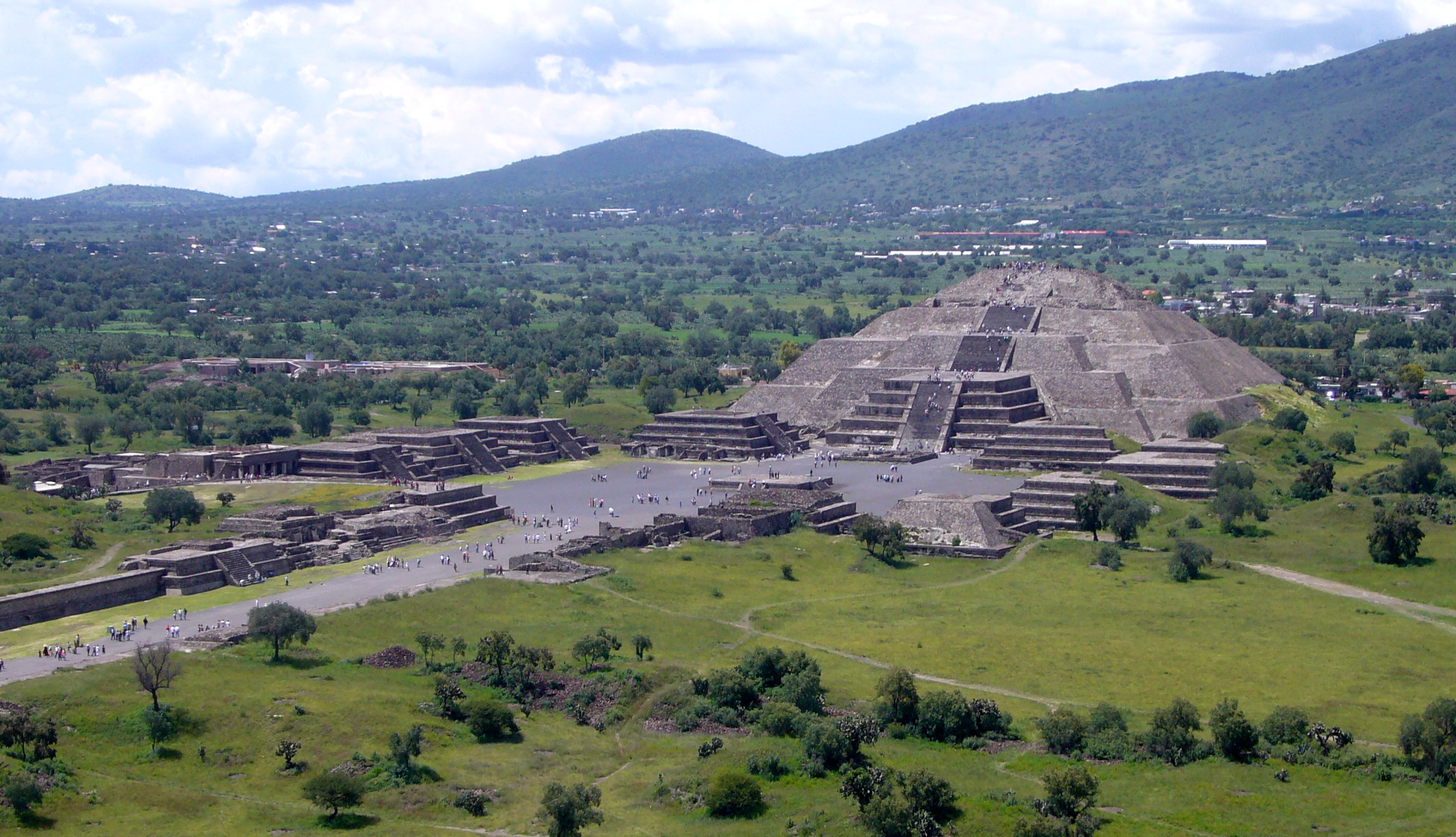
Great Goddess, vicinity of Pyramid of the Moon, Teotihuacan
Late Formative. Wearing a blouse and wringing
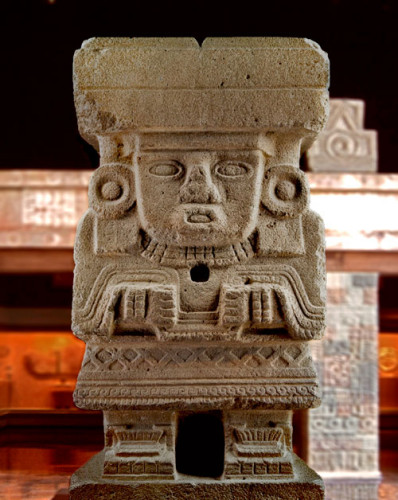
Greenstone mask, Teotihuacan
Early Classic
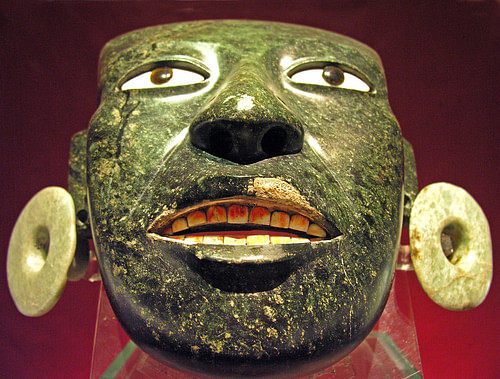
Ceramic assemblage with eagle imagery, Teotihuacan
Early Classic. Costumed individual with a mask, bird headdress, and pectoral jewelry. Headdress is much bigger than the head or mask which makes the figure disappear beneath
Temple of the Feathered Serpent, Teotihuacan
Early Classic. Buried and bound human skeletons dressed as warriors distributed systematically within. Celebrates/commemorates warfare. Major tomb at center. Unusual double pyramid. Most burials are on the periphery of the structure. Relief decoration on tablero-talud walls of temple. Tunnels underneath temple with chambers depicting chronological model
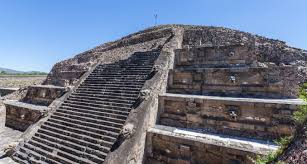
Great Goddess, Tepantitla complex, Teotihuacan - tablero and talud friezes
Early Classic. Hands and head of a female figure. Underneath, an overturned basin spills streams that fertilize the plants in the margin.
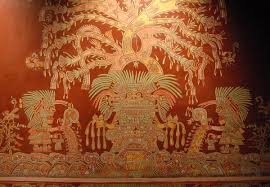
Tripod vessel with priest figure
Early Classic. These vessels are very popular in Teotihuacan. Often painted with imagery
altepetl
the local, ethnically-based political entity, usually translated into English as "city-state", of pre-Columbian Nahuatl-speaking societies in the Americas. The altepetl was constituted of smaller units known as calpolli and was typically led by a single dynastic ruler known as a tlatoani, although examples of shared rule between up to five rulers are known.
tablero-talud
An architectural style often found in pyramids, temples, or platforms

huipil
the most common traditional garment worn by indigenous women from Mexico and other parts of Central America
goggle eyes
Goggles seem to be most typically associated with the Aztec storm god, Tlaloc, also called the god of rain and a god of war. Also a symbol of Teotihuacan culture.
olla
a ceramic jar, often unglazed, used for cooking stews or soups, for the storage of water or dry foods, or for other purposes like the irrigation
tripod vessel
Popular in Teotihuacan. Perhaps to be placed over a fire.
triple-drop sign
?
Tlaloc
Ruler of rain and lightning. brought crops to the people. Important, but intimidating.
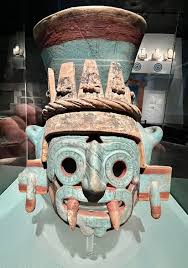
ceramic assemblage
collections of pottery artifacts that are discovered at archaeological sites and studied together as a group
tenon head
Stone carvings of heads. Often in Mayan culture found depicting a human head emerging from the jaws of a divine earth monster

speech scroll
Swirled lines from the mouth indicating that the figure is speaking

Standing ruler, Stela 4, Monte Alban
Early Classic. Teotihuacano influence shown in headdress. Figure is named 8 deer (this would be their birthday), shown in the petroglyph. 8 deer is a prominent ancient figure in Late Classic codices (but maybe that’s a different 8 deer)
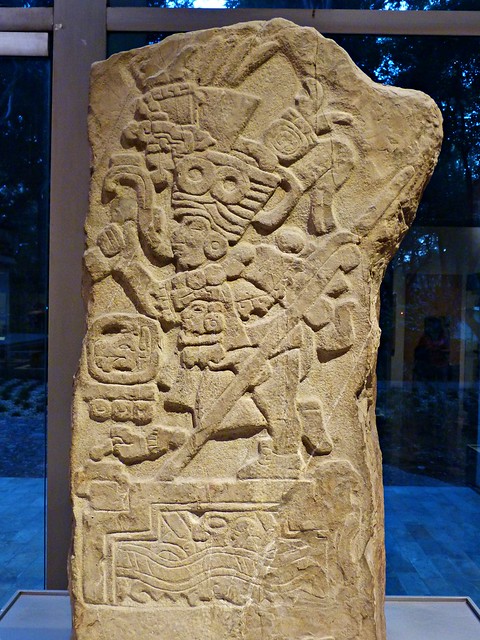
Ceramic figure with Cocijo headdress, Tomb 104, Monte Alban
Early Classic. Tomb door is surmounted by a ceramic figure with cocijo (rain god) headdress
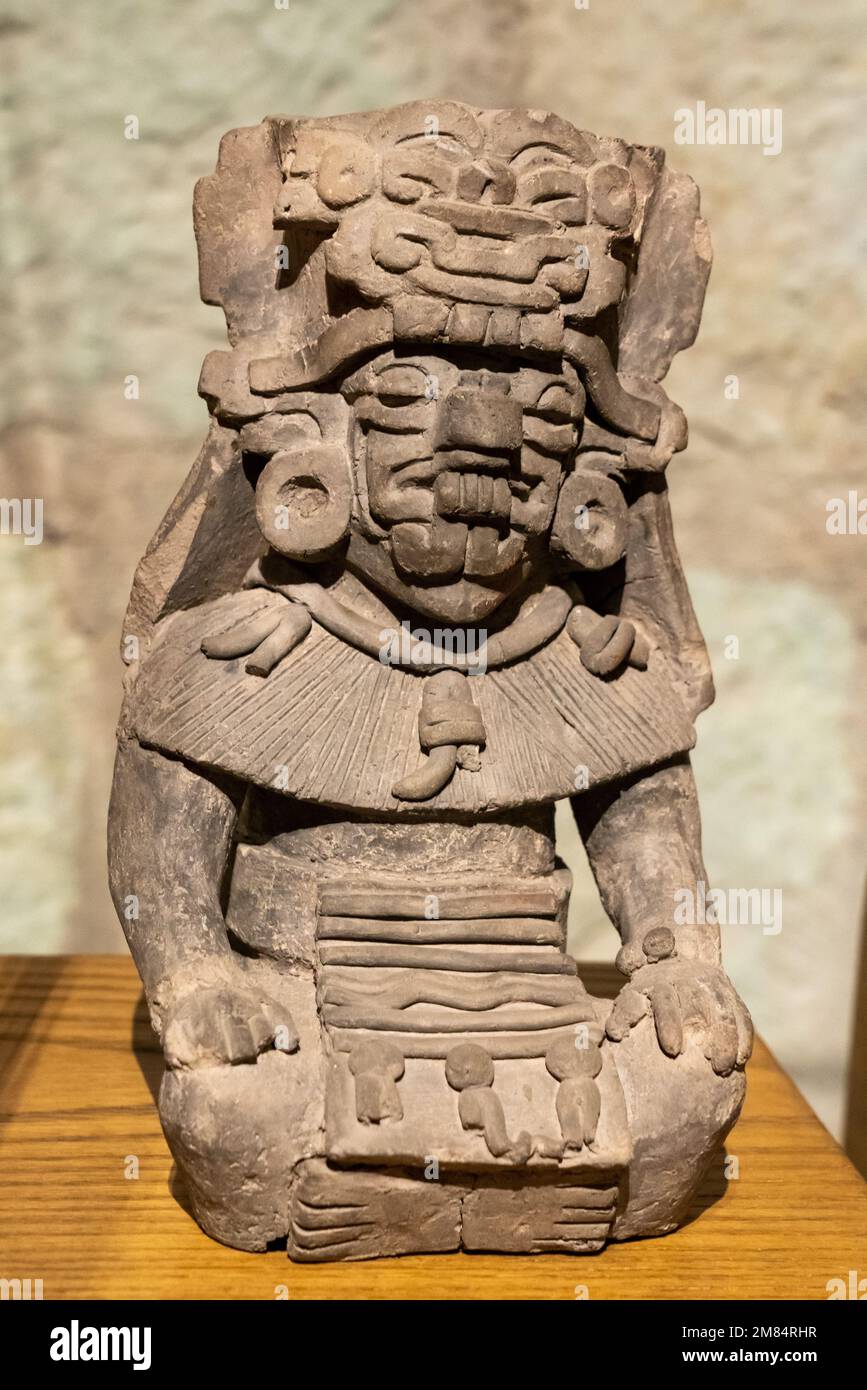
Interior painting with cult figure and attendants, Tomb 104, Monte Alban
Early Classic. Hasty workmanship (drips and spills) suggests that the final decoration was executed at the last moment. Tomb 104 is underneath palace compound, behind stone slab and decor. Central space opens to sky, surrounded by rooms. Staircase down to tomb. Contains a single individual. Inside is painted with murals, offers food and drink on floor. Figures on side walls are depicted as making offerings (would appear as making offerings along side real people making offerings at the time of the burial).
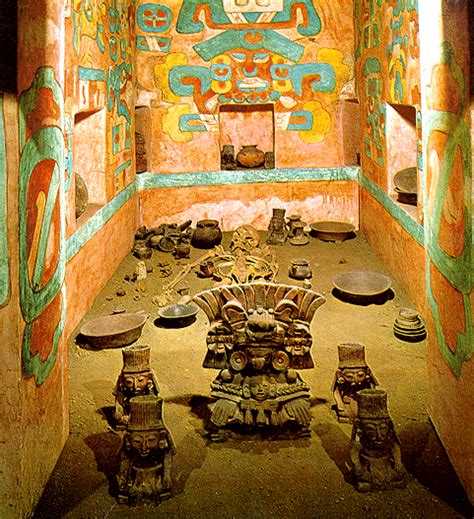
Pyramid of the Niches, El Tajin
Late Classic. 365 niches. Decorated baluster (side of stairway) with depiction of swirling serpent. Stela at the base.
South Ballcourt, El Tajin + frieze with sacrifice scene
Late Classic. Stone artwork depicts a ball player’s sacrifice (heart is being cut out), death god emerges from a pot (watching the sacrifice), death gods seem to just show up when someone dies or is sacrificed. Whole losing team is sacrificed.
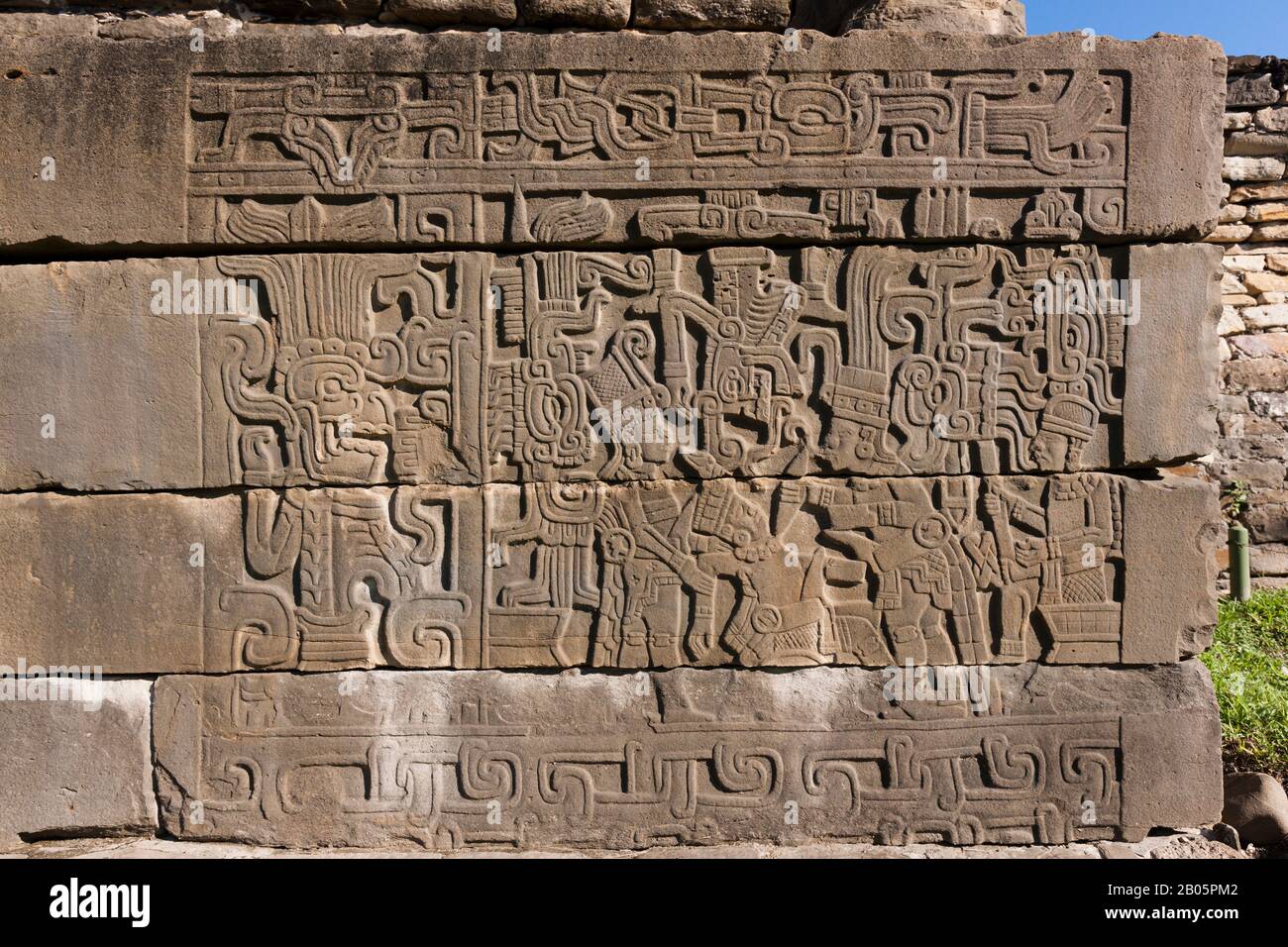
Stela 3, Cotzumalhuapa
Late Classic. Depicts a ball player and death god, both in ballgame yokes, standing in front of a temple. They reach toward a scorpion sun to offer a human heart.
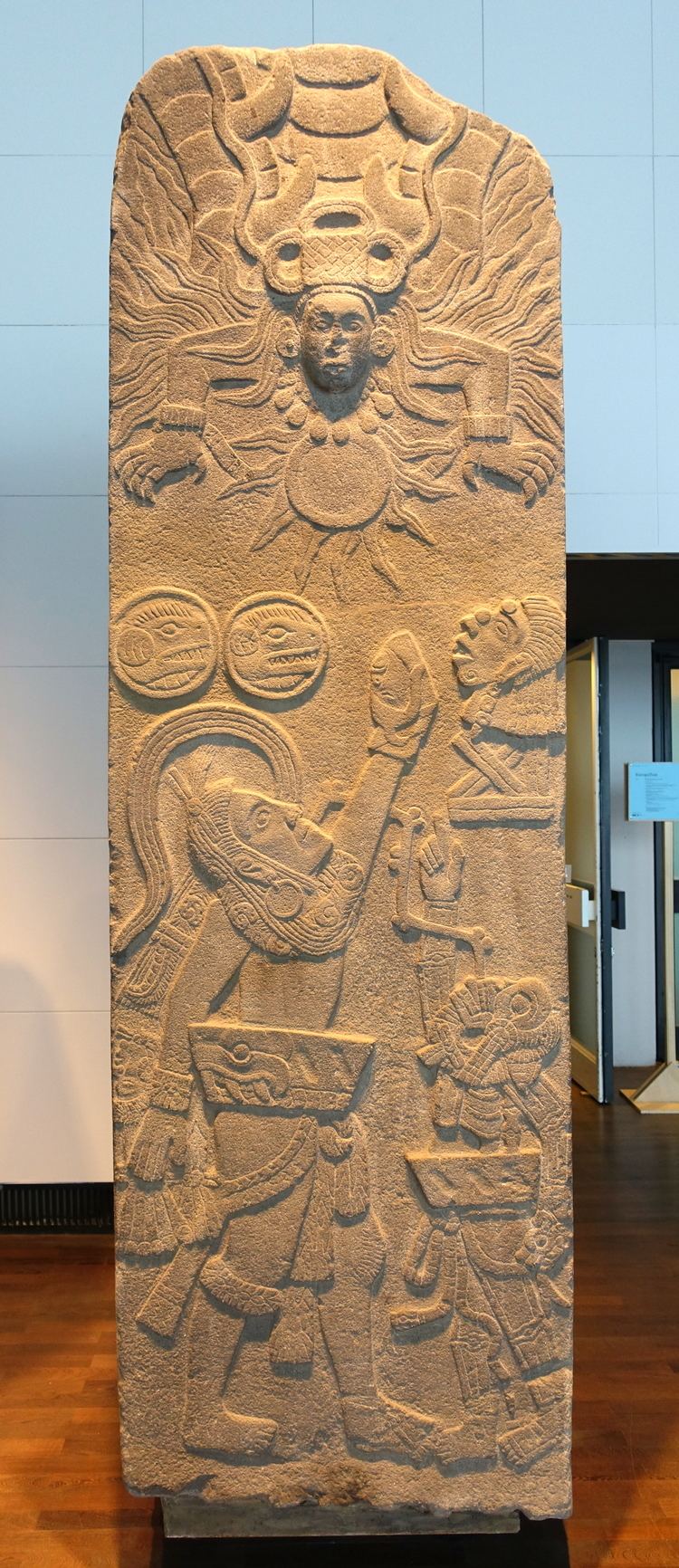
Monte Alban molding
?
yohopèe
Zapotec two-room temple, house of vital force, suggests that attracting vital energies or life forces (e.g., pèe) into built structures, at least for the duration of the ceremonial proceedings, is likely a major priority
double outline
?
Cocjio
The lightning deity
quehui
a minor palace
funerary urn
Made to hold remains
palma, yoke, hacha
yoke is a horseshoe shape made of stone worn around the hips. palma was a long stone statue-like thing that was placed in the opening of the yoke. hacha was like a post in football, it can be moved
Rosalila temple, Structure 16, Copan
Early Classic. A nine-level complex architecture achievement. A funerary building. Covered over later on with more construction, as was common practice for both Teotihuacan and Mayan societies
North Acropolis, Tikal
Early Classic. Had stela and altar in front (I believe the stela was of yax ein?) Pyramids are tall and expansive, different levels. Wall apron, not tablero talud. Apron molding is common in Mayan architecture. Tombs of Early Classic rulers are located within
Stela 4 (Yax Nuun Ayiin or Curl Nose), Tikal
Early Classic. Yax Ein actually means First Alligator. Frontal view of figure (atypical for Mayan stelae) with wide, large headdress and tassels (Teotihuacan design). Almost appears to hold a tlaloc head
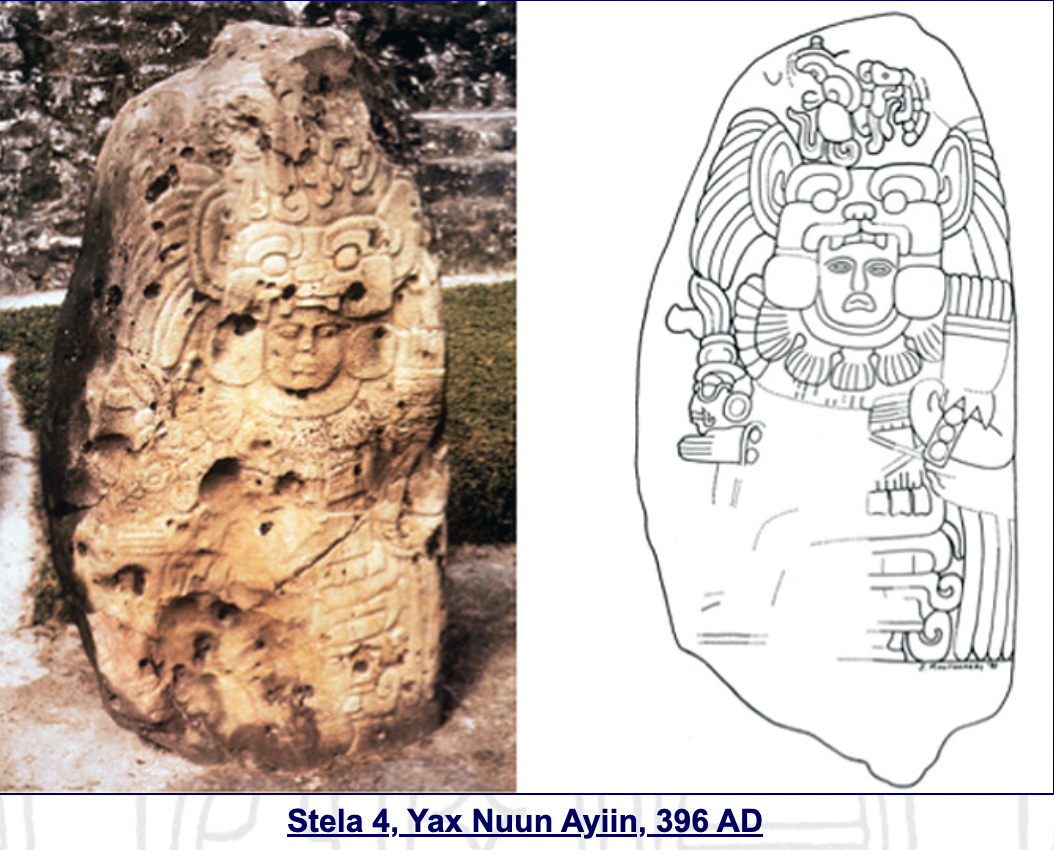
Stela 31 (Siyah Chan K’awiil or Stormy Sky), Tikal
Early Classic. The principal monument of Siyah Chan K’awiil, son of Yax Ein. Hard, dense limestone. Inscription on back of past Tikal rulers. Ancestral figure looking down on the figure from the top. Belt buckle has 3 celts. Profile view of Yax Ein on both sides, as if he was standing right behind his son.
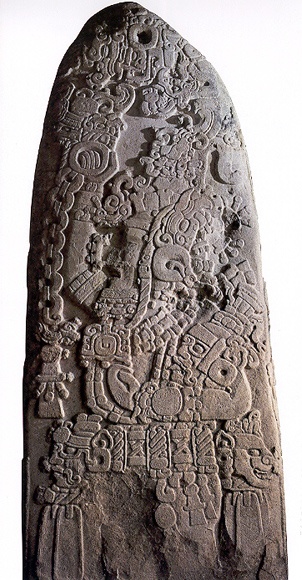
Interior painting, Tomb 1, Río Azul
Early Classic. White plaster background with designs painted on in red and black paint. Jaguar god of the underworld on far wall. Niches on left and right for offerings. Long count date on back (8, 1, 13…must be year 74 CE)
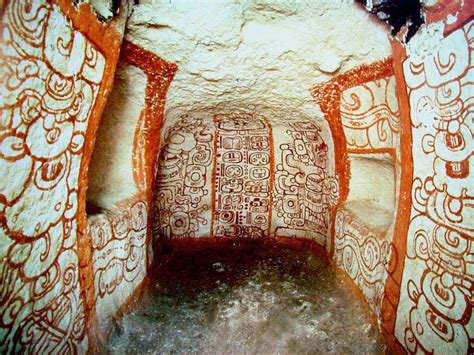
Family group and musicians, Structure B13, Uaxactun
Early Classic. Likely an inside wall, depicts unnamed figures. Two registers (levels), thought to be levels of a pyramid. Gathering, cooking? No gods or goddesses. Text on mural could be description or conversation between people.
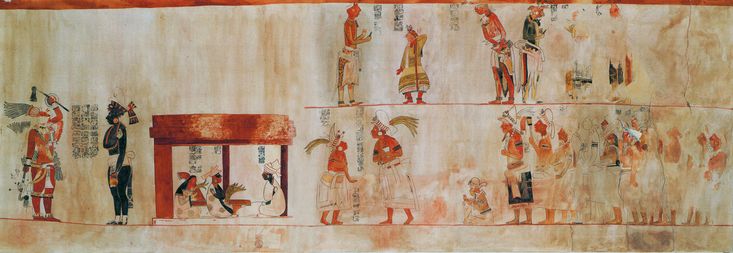
Tripod vessel (Dazzler Vase), Copan
Early Classic
Two-art effigy vessel, Burial 10, Tikal
Early Classic. Sculpture of a death god (things can be put inside him and burned, smoke comes out through holes in the face). Burial 10 is Yax Ein’s tomb
Cormorant basal-flange bowl
Early Classic. Flange refers to lip around bottom (this one is a turtle). 3D cormorant emerging from the lid but wings are painted on 2D. Cormorant eats a snail.
X-ray mask
a mask or costume that shows the wearer underneath. depicted in artwork, it looks like an x-ray image
corbelled vault
a doorway or hallway made of layered stones closer and closer as they go up to create an arch (arrow shaped)
apron molding
sometimes called wall apron, a design where the wall kind of looks like it has a tablecloth draped over it
kalomte/ahau
a lord or king, ruler over a certain land like a town or acropolis (ahau is slightly lower rank than kalomte)
Popol Vuh
a text recounting the mythology and history of the Kʼicheʼ people of Guatemala
chiasmus, merismus
?
Xibalba
Xibalba, roughly translated as "place of fright", is the name of the underworld in Maya mythology, ruled by the Maya death gods and their helpers
Jaguar God of the Underworld
one of the most important and also more mysterious deities of the ancient maya. sometimes its glyph has a roman nose, a jaguar ear, a kind of a cord, surrounding the eye and ending in a knot above the nose, an “ak’bal” marking in the lower back of the head, and sometimes a triangular tooth
range-type structure
?
mansard roof
roof with flat top - sometimes a building, temple, or altar placed on the flat top
K’awiil
a Maya deity identified with power, creation, and lightning. He is characterized by a zoomorphic head, with large eyes, long, upturned snout and attenuated serpent foot. Often with stone celt on his belt
Quiché
?
Huracan
a Kʼicheʼ Maya god of wind, storm, fire and one of the creator deities who participated in all three attempts at creating humanity. He also caused the Great Flood after the second generation of humans angered the gods.